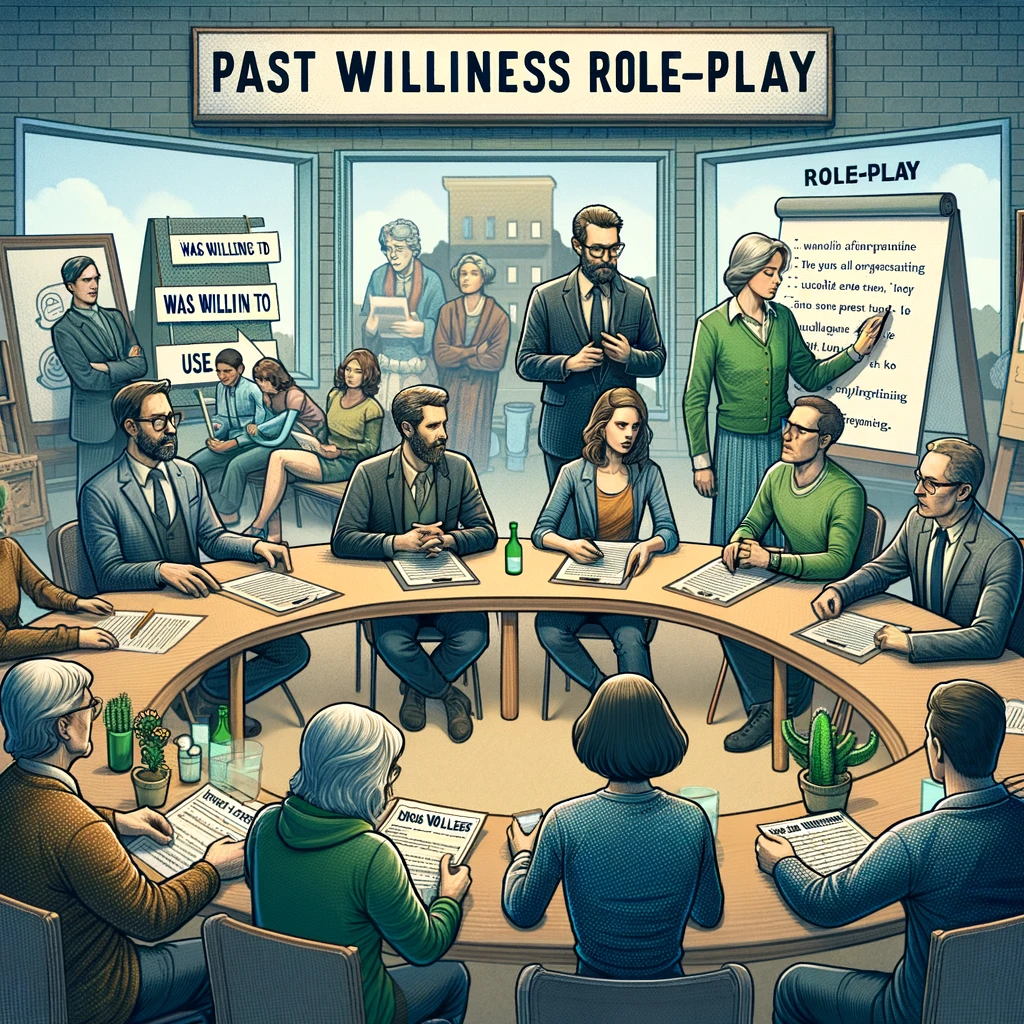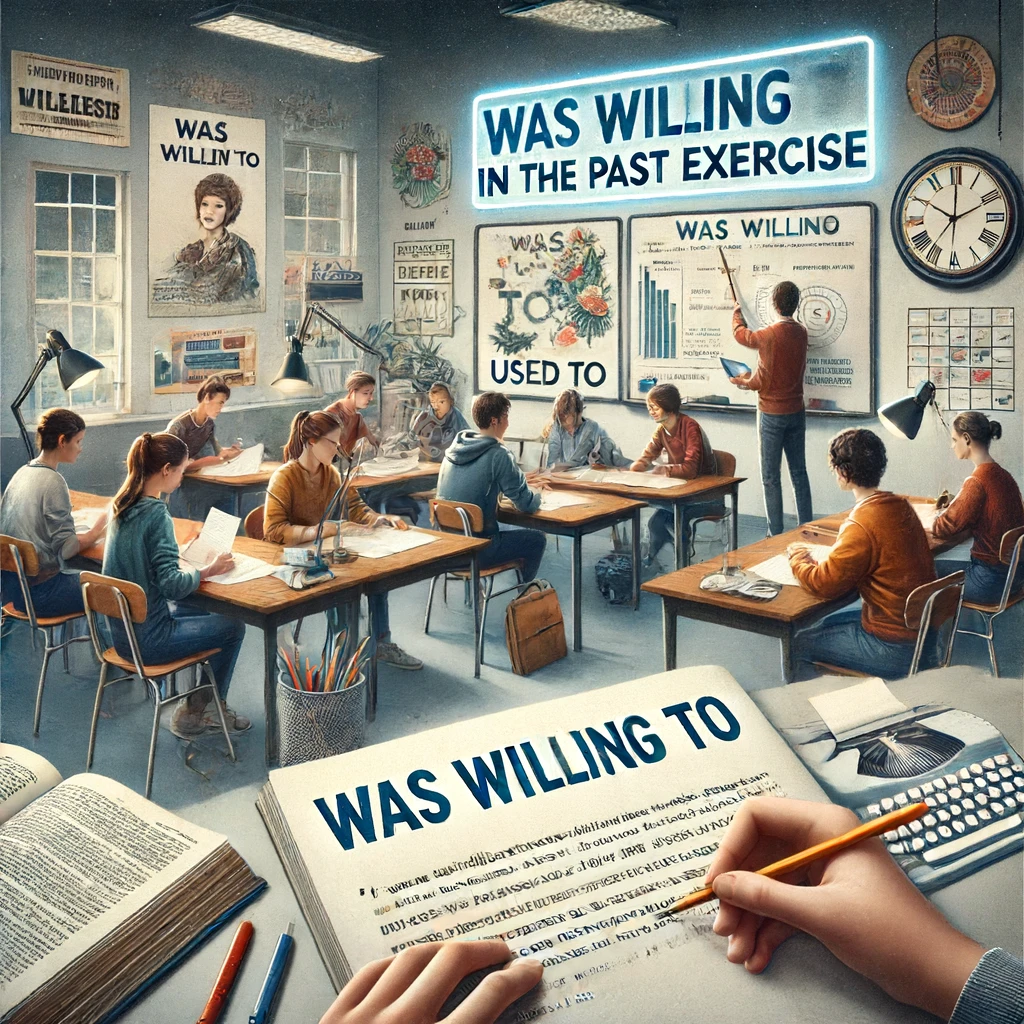
Learning Objectives
- You will be able to explain the use of “would” to describe habitual or voluntary actions that occurred in the past.
- You will be able to differentiate the use of “would” for past habits and voluntary actions from other past tense forms such as “used to” and the past simple.
- You will practice using “would” to describe past habitual actions and willingness in various real-life scenarios, both in speaking and writing.
- You will improve your listening and speaking skills by engaging in activities that require the use of “would” to talk about past actions.
“Would” for Willingness in the Past
“Would” is used to describe habitual actions or behaviors in the past that were done willingly or regularly. It often conveys a sense of routine or repeated actions that a person used to do voluntarily. This use of “would” is similar to “used to” but emphasizes the voluntary nature of the past actions.
Structure
- Affirmative: Subject + would + base form of the verb
- Example: “Every summer, we would visit our grandparents in the countryside.”
- Negative: Subject + wouldn’t + base form of the verb
- Example: “When I was a child, I wouldn’t eat vegetables.”
- Interrogative: Would + subject + base form of the verb?
- Example: “Would you play outside after school when you were younger?”
Examples

Example 1: “When I was young, I would spend hours reading books in my room.”
- Application: Describes a habitual action in the past done willingly.
Example 2: “Every weekend, they would go hiking in the mountains.”
- Application: Indicates a regular, willing activity in the past.
Example 3: “She would always help her mother with the cooking.”
- Application: Shows a repeated, voluntary action in the past.
Example 4: “My friends and I would play soccer in the park every afternoon.”
- Application: Describes a routine activity that was done willingly in the past.
Example 5: “He wouldn’t miss a single practice session when he was on the basketball team.”
- Application: Indicates a regular, voluntary behavior in the past.
Learning activities
Personal Anecdotes Sharing (20 minutes)
Objective: Practice using “would” to describe past willing actions through personal stories. Instructions:
- Preparation: Think about your childhood or teenage years and recall activities you used to do regularly and willingly.
- Pair Work: The class will be divided into pairs. Each student takes turns sharing a personal anecdote using “would” to describe past willing actions.
- Discussion: After sharing, each pair discusses the similarities and differences in their past activities.
- Example: “When I was a kid, I would spend every summer at my grandparents’ house. We would go fishing and pick fresh vegetables from the garden.”

Past Willingness Role-Play (30 minutes)
Objective: Use “would” to describe past habitual and willing actions in a role-playing scenario. Instructions:
- Preparation: You will receive some scenarios that require you to talk about your past routines and willing actions (e.g., “Describe your weekends as a teenager” or “Talk about your family gatherings when you were younger”).
- Group Work: The class will be divided into small groups. Each group selects a scenario and prepares a short role-play.
- Performance: Groups perform their role-plays in front of the class, using “would” to describe past willing actions.
- Feedback: After each performance, the class provides feedback on the use of “would” and the clarity of the descriptions.

Willingness in the Past Writing Exercise (30 minutes)
Objective: Reinforce the use of “would” in written form by creating a story about past willing actions. Instructions:
- Preparation: You will receive a prompt to write a short story about a typical day in their past, focusing on actions you did willingly.
- Writing: Each student writes a story, ensure you use “would” to describe past willing actions. Be detailed and creative.
- Peer Review: After writing, exchange your stories with a partner for peer review. They highlight the use of “would” and provide feedback on the clarity and fluency of the writing.
- Sharing: Select a few students to share their stories with the class.

